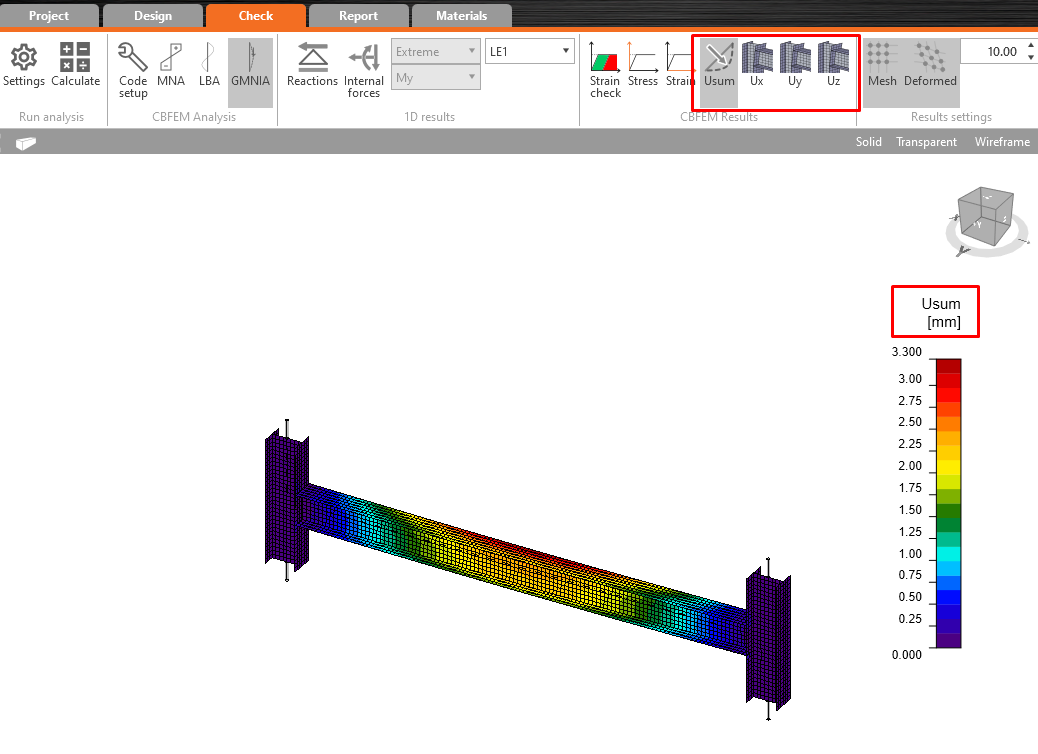Member analysis - Interpretation of MNA and GMNIA results
Ultimate limit state
The ultimate limit state is reached when the strain for buckling susceptible members has reached 5% or when the solver stops converging because the maximum load has been reached.
Using the LBA analysis, factor αcr (smaller or greater than 15) tells you whether to use only the MNA or GMNIA analyses.
LBA >15: only MNA (materially non-linear analysis) is needed (100% applied) and the results for the MNA Plates have to be less than 5 %
LBA <15: MNA is a must, the GMNIA (Geometrically and materially nonlinear analysis with imperfections) is needed, and the GMNIA Plates' results (including the imperfections) must be less than 5 %.
Serviceability limit state
Design codes provide limits for deflection in the serviceability limit state. These can be checked by comparing the deflection of the analyzed members to the limits.
usum - vector sum of deflection (ux, uy, uz) at the given point
Watch our product engineer Vit modeling a transverse beam of a railway bridge and analyzing it in Member.




